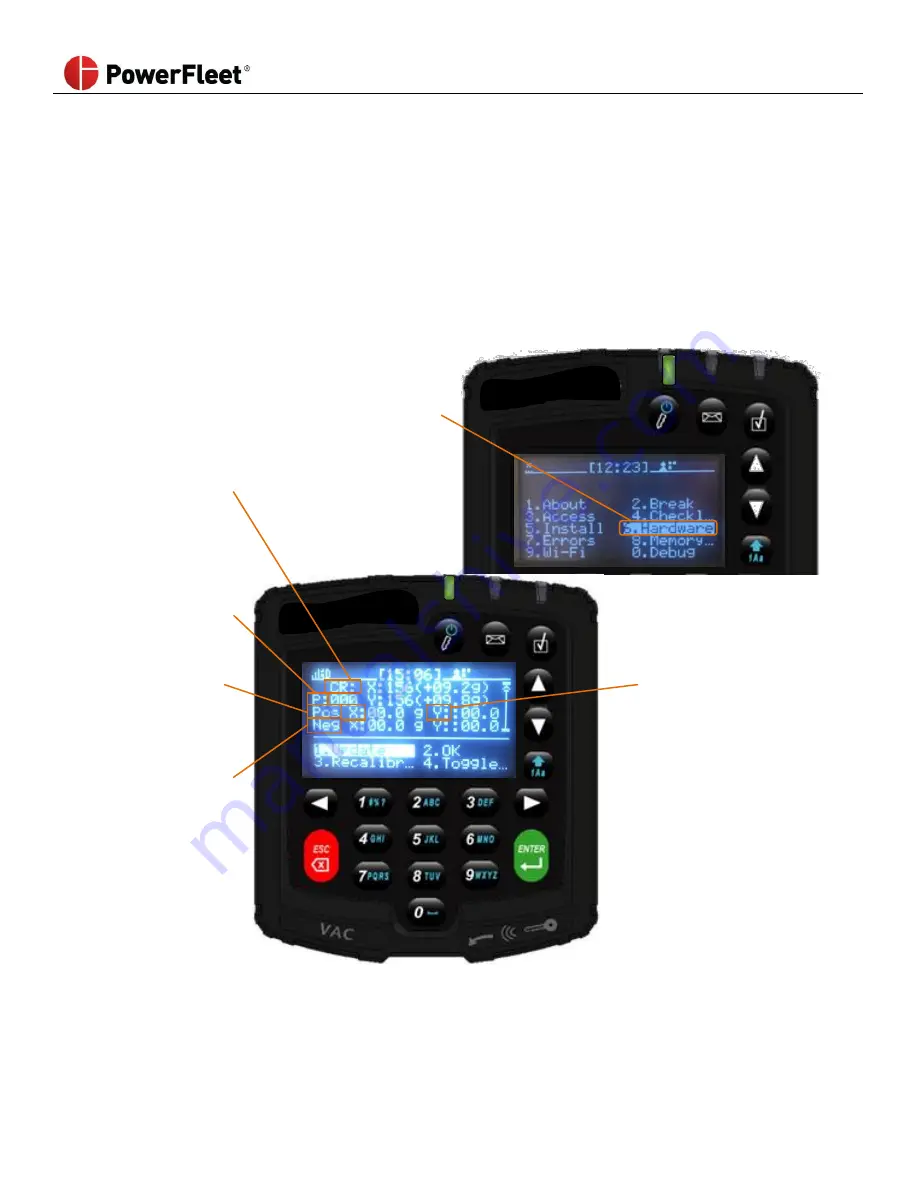
PowerFleet
®
VAC4 and VAC4S Hardware User’s Guide
085-00000700 Rev K
Page 62 of 103
Impact Sensor Troubleshooting
Once the impact sensor has been properly installed, it is self-contained and self-maintained and no operator
configuration is required. During the installation process, the impact sensor self-calibrates to its environment (similar to
setting the ‘zero’ level of a scale). This is
NOT
the process that determines the minimum impact level. The impact level is
continuously evaluated and adjusted. The calibration is repeated daily during periods of inactivity to ensure that the
device is maintaining acceptable impact parameters and identifying possible issues (e.g., the mounting becomes
compromised and results in a “floating” sensor). If issues are identified, m
anual troubleshooting may be required.
Note:
A properly mounted and secured impact sensor is the most important factor in ensuring a working impact
management system.
Reading the Impact Screen:
1.
Log into the vehicle.
2.
On the first menu screen, select HARDWARE.
3.
On the “Hardware” sub
-menu, select IMPACT.
CR
Current sensor reading (refreshes automatically)
for X and Y axis
P
The Period a
reading takes in
milliseconds.
POS
Current initial
force (g) threshold
for creating an
impact event.
X
and
Y
Should both be 0.0g ±
0.2g when the vehicle
is parked in a flat
location. (Also,
normal values should
be between 70 and 90
when flat).
NEG
Current initial
force (g) threshold
for creating an
impact event.
Note:
There are 4 additional impact VAC screen displays with detailed readings and settings that can be accessed by
scrolling down. PowerFleet Support may request information about the detailed readings and settings from those
screens for remote troubleshooting.






























